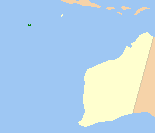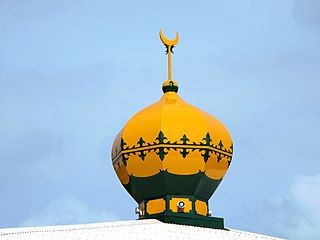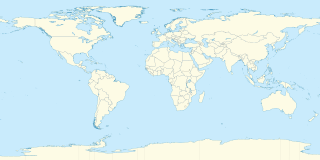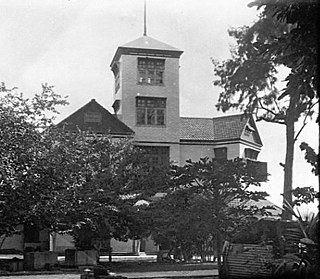Females in Cocos
The women in Cocos (Keeling) Islands are the female residents of Cocos (Keeling) Islands, a dependency of Australia that can be found in the Indian Ocean. The first known settlers arrived on the islands in 1826. [1]
| Part of a series on |
| Women in society |
|---|
 |
The women in Cocos (Keeling) Islands are the female residents of Cocos (Keeling) Islands, a dependency of Australia that can be found in the Indian Ocean. The first known settlers arrived on the islands in 1826. [1]
In 1826, the female residents of Cocos Islands had an average birth rate of 8.4. [1]
For the women in Cocos Islands, the legal marrying age is 16 years old. After formalizing the marriage, women in general can make decisions about where they will be residing, a choice that is not dependent on the male spouses. Legal policies regarding marriage in Cocos Islands, however, is regulated by the Commonwealth Marriage Act of 1961, and is governed by ordinances such as the Christian Marriage Ordinance, the Civil Marriage Ordinance, and the Muslim Ordinance, among others. [2]
Kaum Ibu (Women's Group) is a women's rights organisation that represents the view of women from the islands at a local and national level. [3]

Christmas Island, officially known as the Territory of Christmas Island, is an Australian external territory comprising the island of the same name. It is located in the Indian Ocean, around 350 kilometres (220 mi) south of Java and Sumatra and around 1,550 km (960 mi) north-west of the closest point on the Australian mainland. It lies 2,600 km (1,600 mi) northwest of Perth and 1,327 km (825 mi) south of Singapore. It has an area of 135 square kilometres (52 sq mi).

The Territory of Cocos (Keeling) Islands is an Australian external territory in the Indian Ocean, comprising a small archipelago approximately midway between Australia and Sri Lanka and relatively close to the Indonesian island of Sumatra. The territory's dual name reflects that the islands have historically been known as either the Cocos Islands or the Keeling Islands.

The Straits Settlements were a group of British territories located in Southeast Asia. Originally established in 1826 as part of the territories controlled by the British East India Company, the Straits Settlements came under British Raj control in 1858 and then under direct British control as a Crown colony on 1 April 1867. In 1946, following the end of the Second World War and the Japanese occupation, the colony was dissolved as part of Britain's reorganisation of its Southeast Asian dependencies in the area.

The Clunies-Ross family were the original settlers of the Cocos (Keeling) Islands, a small archipelago in the Indian Ocean. From 1827 to 1978, the family ruled the previously uninhabited islands as a private fiefdom, initially as terra nullius and then later under British (1857–1955) and Australian (1955–1978) sovereignty. The head of the family was usually recognised as the resident magistrate, and was sometimes styled as the "King of the Cocos Islands"; a title given by the press.

The states and territories are federated administrative divisions in Australia, ruled by regional governments that constitute the second level of governance between the federal government and local governments. States are self-governing polities with incomplete sovereignty and have their own constitutions, legislatures, departments, and certain civil authorities that administer and deliver most public policies and programmes. Territories can be autonomous and administer local policies and programmes much like the states in practice, but are still constitutionally and financially subordinate to the federal government and thus have no true sovereignty.

The flag of the Cocos (Keeling) Islands was created in 2003 and adopted on 6 April 2004. It was designed by territory resident Mohammed Minkom, who won a design contest as a teenager.

The Shire of Cocos (Keeling) Islands is a local government area which manages local affairs on the Australian external territory of Cocos (Keeling) Islands. The island is grouped with Western Australia but is administered by the Department of Infrastructure, Regional Development and Cities and an Administrator.

Islam in the Cocos (Keeling) Islands is the majority religion. As of the 2016 census, 75% of the population were Muslim.

Cocos Malays are a community that form the predominant group of the Cocos (Keeling) Islands, which is now a part of Australia. Today, most of the Cocos Malay can be found in the eastern coast of Sabah, Malaysia due to ethnic cleansing by the British in the 1950s during the colonial period. Despite that they all have assimilated into the ethnic Malay culture, they are named in reference to the Malay race, originating from different places of the Malay archipelago such as Bali, Bima, Celebes, Madura, Sumbawa, Timor, Sumatra, Pasir-Kutai, Malacca, Penang, Batavia and Cirebon, as well as South Africa and New Guinea.
Malaysian Australians refers to Malaysians who have migrated to Australia or Australian-born citizens who are of Malaysian descent. This may include Malays as well as overseas Chinese, Indian, mixed Malaysians and other groups. There are also ethnic Malays in Australia who came to Australia prior to the establishment of Malaysia or who have come from other regional countries including Indonesia,Brunei and Singapore ).

North Keeling is a small, uninhabited coral atoll, approximately 1.2 square kilometres (0.46 sq mi) in area, about 25 kilometres (16 mi) north of Horsburgh Island. It is the northernmost atoll and island of the Australian territory of the Cocos (Keeling) Islands. It consists of just one C-shaped island, a nearly closed atoll ring with a small opening into the lagoon, about 50 metres (160 ft) wide, on the east side. The lagoon is about 0.5 square kilometres (0.19 sq mi) in area. The island is home to the only surviving population of the endemic, and endangered, Cocos buff-banded rail, as well as large breeding colonies of seabirds. Since 1995, North Keeling Island and the surrounding sea to 1.5 kilometres (0.93 mi) from shore have been within the Pulu Keeling National Park.
The Supreme Court of the Cocos (Keeling) Islands is the de jure superior court for the Cocos (Keeling) Islands, an Australian external territory. The court was originally established in 1958 after the British Government transferred sovereignty for the islands from Singapore to Australia. The court had jurisdiction to deal with all serious crimes and major civil claims for damages occurring on the Island.

The postage stamps and postal history of the Cocos (Keeling) Islands is linked to those of the two British colonies and of Australia to which the Indian Ocean archipelago was successively attached.

Women have been a vital part of history and culture in the geographic area known as Oceania today. Women in Oceania have diverse cultural identities which relate to the geography of the continent and the social structures of the people living there. Their evolution, culture and history coincide with the history of Oceania itself.

Although it is an Australian External Territory, the culture of the Cocos (Keeling) Islands has extensive influences from Malaysia and Indonesia.
A status referendum was held in the Cocos (Keeling) Islands on 6 April 1984. All registered voters participated in the vote, with 88% voting for integration with Australia. The referendum has been described as the "smallest act of self-determination ever conducted".

The West Island Mosque is a heritage-listed mosque at Alexander Street, West Island, of the Cocos (Keeling) Islands, an external territory of Australia. The mosque was added to the Australian Commonwealth Heritage List on 22 June 2004.

Oceania House is a heritage-listed house at Jalan Bunga Kangkong, Home Island, Cocos (Keeling) Islands, Australia. It was added to the Australian Commonwealth Heritage List on 22 June 2004.

The Home Island Cemetery is a heritage-listed cemetery at Home Island, Cocos (Keeling) Islands, Australia. It was added to the Australian Commonwealth Heritage List on 22 June 2004.
Kaum Ibu is a women's rights organisation in the Cocos (Keeling) Islands. In 2001 and 2004 the group was part of consultations on transport and regional services, led by the Government of Australia's Joint Standing Committee on the National Capital and External Territories. The chairperson of the organisation is Danie Olbio.
| Wikimedia Commons has media related to Maps of the Cocos (Keeling) Islands . |